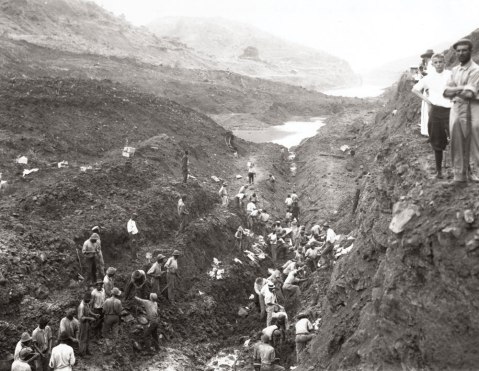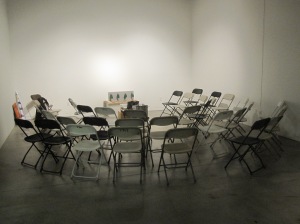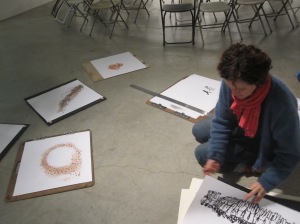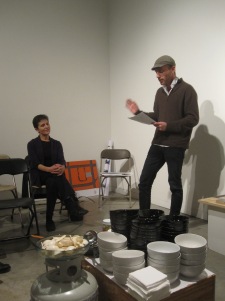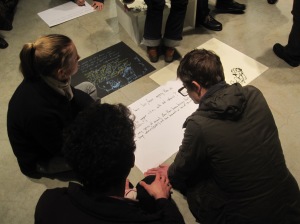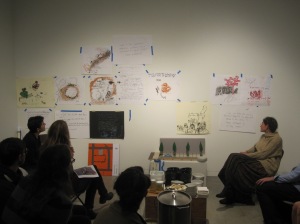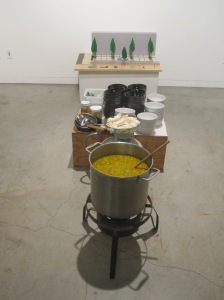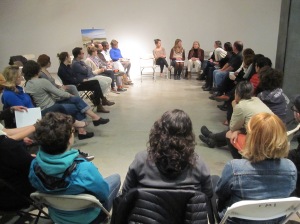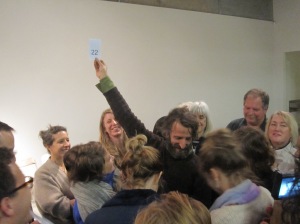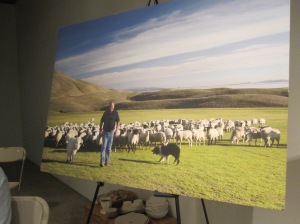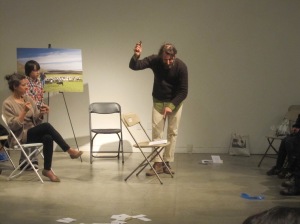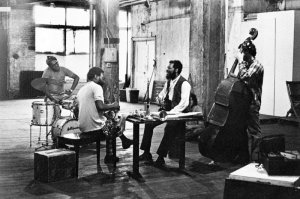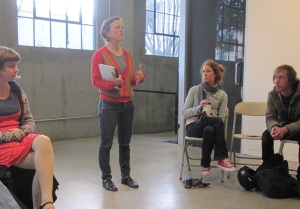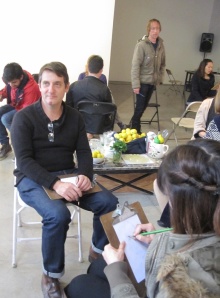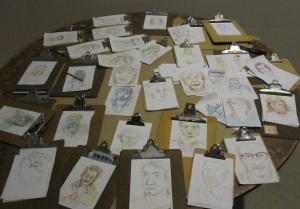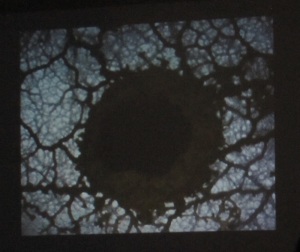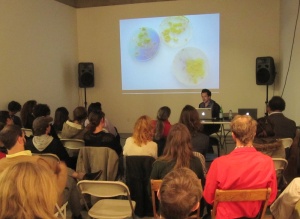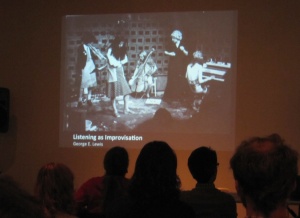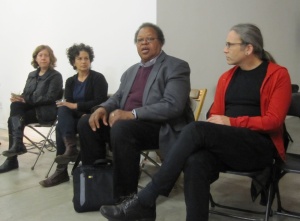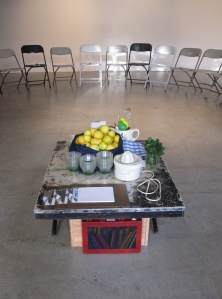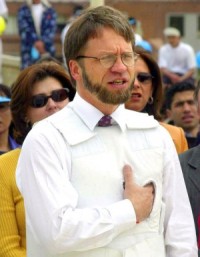How to move a mountain
February 12, 2013
The Citizens’ Laboratory is inviting experts on systems of organization from both the human and animal worlds to Southern Exposure. Two or more speakers will describe their particular field, rubbing together seemingly unrelated world with the intention of opening a debate about modes of collaborations and generate novel ways of thinking about collective endeavors.
How to Move a Mountain takes place over three sessions, each including brief presentations by experts, group conversation, and a responsive interpretation by an artist.
#1: What is at stake?
Thursday, January 24, 2013, 7:00 – 9:00 pm
With Dr. Deborah Gordon, Paul Chasan, and Kathleen Henderson.
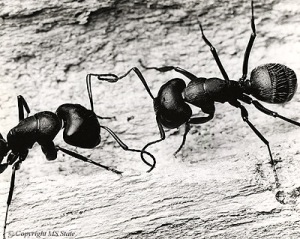
The first How to Move a Mountain event investigated the stakes involved in collective behavior. How does a community build its home, and what is potentially lost, won, or stabilized in the process?
We convened around a pot of simmering vegetarian stew with Dr. Deborah Gordon, Professor of Biology at Stanford University and Senior Fellow at the Woods Institute for the Environment, who presented her research into the behavior of ant colonies, and Paul Chasan, a San Francisco city planner, who talked about how we shape the urban landscape, followed by a group discussion inspired by a series of drawing initiated by artist Kathleen Henderson and completed by the audience.
#2: Confrontation
Wednesday, February 27, 2013, 7:00 – 9:00 pm
With Catherine Powell, Don Watson and Michael Swaine.
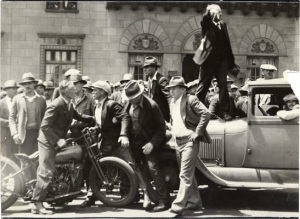
The second installment addressed the themes of confrontation, swarming, encircling, and infiltration.
Catherine Powell, Director of the Labor Archive and Research Center, talked about the history and strategies of the union movement in San Francisco and Don Watson, owner of Wooly Weeders, an open range sheep herding company, explained the varied relationships between sheep, herding dogs and shepherds. Michael Swaine led the audience into three participatory performances, the first one around an imaginary table at Thanksgiving; in the second one we crowded into an elevator and went down 24 floors and finally we were tempted to throw the first stone.
At the end we ate toast with sheep’s milk ricotta while we discussed the possible connections between sheep herding and union struggles.
#3: Intimacy
Wednesday, April 24, 2013, 7:00 – 9:00 pm
With Helena Keefe, Phil Ross and George Lewis.
For the last event in the series we wondered how working as a group demands forms of intimacy whether it is the collaborative power of single-cell slime mold acting collectively to move in complex ways or the sound of voices and musical instruments improvising together.
Following a collective exercise in which artist Helena Keeffe asked us to draw each other’s portrait, Phil Ross presented his research and screened his video Leviathans, a dramatic narrative documenting the romantic life of slime mold. We concluded with trombonist, improvisation theorist, and Professor of American Music at Columbia University George Lewis who opened the discussion after talking about music, improvisation, apprehending the world through sound and his work with interactive computer systems that interact with live performers. And yes, we drank lemonade and took bites of molded lime jello.
